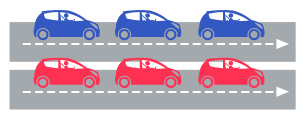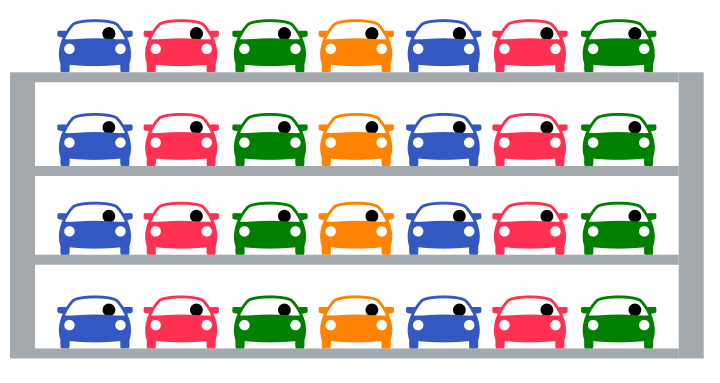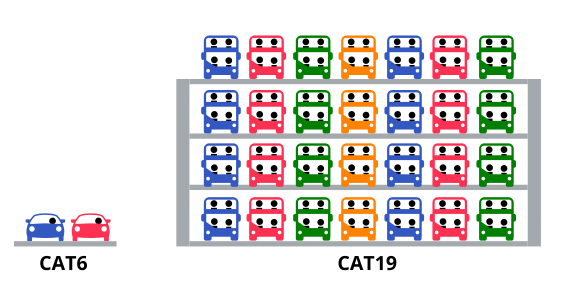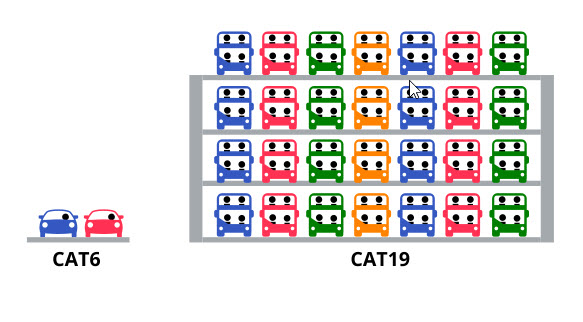This post is taken from my forum post answer that highlights the difference between different categories of modem and their impact on throughput.
I repeatedly see significantly better speeds on my phone (iphone 11) than I do through my MAX-BR1-MK2-LTEA-W
tim.rohrer
This is to be expected. You are comparing a CAT19 modem in the iphone 11 to a CAT 6 modem in the BR1.
The Cat6 modem in the BR1 can combine 2 carriers for both download and upload
To put that into context:
If LTE CAT4 was considered the Base line for LTE (1 x 20Mhz carrier) and we imagined data as passengers in vehicles on a road it might look like this:
Carrier Aggregation
CAT 6 in comparison then (which supports 2 x 20Mhz carrier aggregation) would look like this:
The LTE CAT19 modem in an iphone 11 pro supports 7x 20 Mhz carrier aggregation (download) so that would look like this:

That’s seven lanes of traffic compared to the 2 carriers in CAT6 which is a lot more data!
We also need to talk about MIMO
BUT… CAT19 it also supports 4 x 4 MIMO which if we stick to our analogy is like stacking the lanes vertically:
Then there is Modulation
Modulation takes any of the three RF chracteristics (amplitude, frequency and phase) and alters them to overlay additional streams of data using the same carriers.
In our analogy here then we can think of it as different vehicles where progressive modulation techniques let us squeeze more data (or passengers) into the same space:

CAT19 supports 256bit QAM modulation and although we wouldn’t see this in practice, in theiory that would mean this to our analogy: Yup. 4 levels of 7 lanes of double decker buses.

So if we finally compare the theoretical difference between CAT6 to CAT19 we have this:
Look at how many more data (passengers) we can potentially get through a CAT19 compared to a CAT6 it is significant – but its also very best case – lab conditions really.
In the real world you have loads of variables. There might not be all the available carriers on the tower you’re connected to, some of the carriers might be noisy which will mean that full 256 QAM modulation isn’t possible, and some towers will be over subscribed. You might have different antennas connected, two might be omni directional, two might be directional – so you get different signal qualities which would support different levels of modulation.
So a real world example represented as a diagram might look more like this:

But hopefully you can see that when comparing a CAT6 modem to a CAT19 modem, so long as they can both use the same frequency bands, a CAT19 modem should always perform significantly better than a CAT6 modem.
Download and Upload use different LTE Categories
Finally – for completeness its worth remembering that the different LTE release levels also define different categories for download and upload.
The Intel XMM 7660 modem in an iPhone 11 for example supports CAT 19 download:
- 1600 Mbit/s
- 7×20 MHz carrier aggregation.
- Up to 256-QAM.
- Up to 4×4 MIMO
and CAT13 Upload
- 150 Mbit/s
- 2×20 MHz carrier aggregation.
- Up to 64-QAM
- Up to 2×2 MIMO

